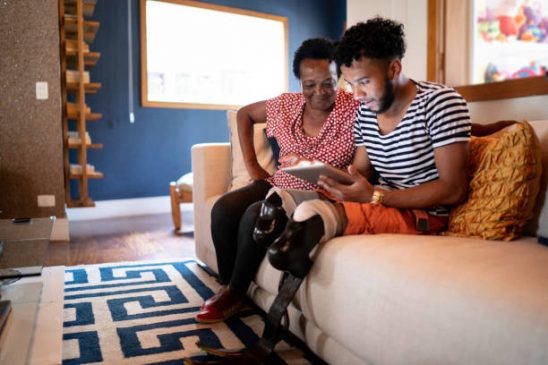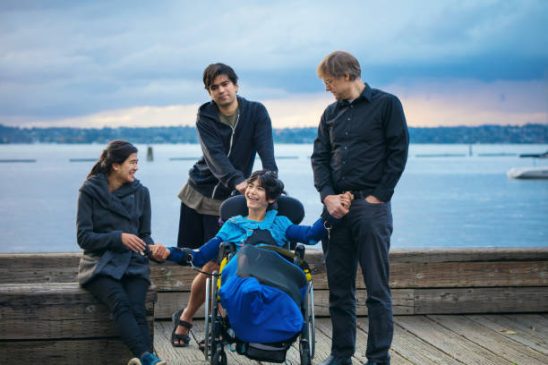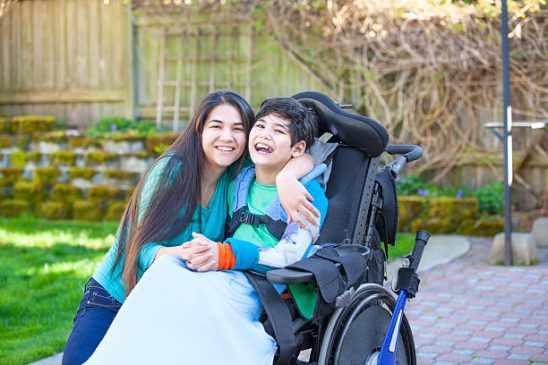There are an estimated 14.1 million disabled people in the UK, according to national disability charity Scope. Yet, people with disabilities are often completely absent from brands’ marketing campaigns or in the mainstream media.
Over the years, brands have paid increasing attention to race, sexuality and gender equality, but more still needs to be done to represent all form of disabilities, even the non-visible. This is especially important as according to a recent survey led by iStock globally, over two-thirds (68%) of consumers say it’s important to them that the companies they buy from celebrate diversity of all kinds.
To assist companies in selecting more inclusive imagery and better represent all forms of disabilities in their visual communications, iStock has curated the Disability Collection: a series of images, videos and illustrations that aims to change the way people perceive disability and encourage more diversity while debunking stereotypes. We wanted to get a bit more information on this so had a conversation with Dr. Rebecca Swift, Global Head of Creative Insights for iStock, to tell us a bit about her thoughts on Ethical Marketing and the collection.

Can you tell me a bit about yourself, your business and what you do day to day?
I have been in the photography industry for over twenty years, starting my career at Tony Stone Images as well as freelancing as a photography consultant and a photography lecturer. I also spent some time at Save the Children researching photography and ethics. I joined iStock in 2012 and have been working there since.
During my time working for iStock, I helped found the Creative Insights team, which I lead. My team is responsible for guiding the content strategy for the company thanks to our in-depth research and analysis of trends in visual communication and purchasing behaviour across our sites. I am also responsible for curating image collections for iStock to provide small businesses with the relevant visuals to help them stand out to consumers.
On a day-to-day basis, I work with photographer and videographer communities that range from amateur hobbyists to renowned professionals, setting creative briefs and assisting communities in delivering against them. I also run global research projects investigating the future of visual communications and as a result of this, I have published many trend reports.
How important do you think ethics are within both your business and within the marketing of your business?
Ethics has always been a huge part of the business for me personally, and I believe that is reflected by iStock as well. I feel personally responsible, as a senior female creative, to make positive changes for the younger generations. This is reflected in our ethical guidelines for editorial content and the way we work with models, which means no re-touching of their body shape among other things.
However, I think the importance of ethics is more prominent when it comes to our passion for evolving the representation of people in visual communications at iStock. It is crucial that the ways in which certain minority groups are depicted in visual language changes, to create more inclusive, authentic and diverse representations of all people.
Disabled people, ageing populations, the LGBTQ community and women are among the many groups that iStock has tried to support thanks to positive imagery, acting as prime examples of how important ethics is to our marketing.

Can you tell me about the Disability Collection?
The Disability collection is the result of work we have been doing to ensure that we help our contributors get closer to authentic representation (in this case with imagery around disability). We know that people who live with disabilities are vastly under-represented in the media, so we have worked with the NDLA to partner with to create shoot guidelines for our contributor community, and also to give us direction in how to advise our customers when choosing content. Instead of disability as something that needs to be “cured,” “fixed” or “overcome”, this project portrays people with a disability in a way that is a natural part of someone’s identity, not its totality.
Why do you feel initiatives like this are important?
Showing people with disabilities is one thing, representing them in a way that feels authentic and aspirational is more important. Disability is as diverse as any other demographic, reducing someone to their disability does not move the visual language forward.

Why do you think it’s important for brands to become more inclusive when it comes to their use of imagery?
Because that is what their customers are expecting. In our VisualGPS research this year, we found that 8 out of 10 consumers expect companies and brands to be consistently committed to inclusivity. And that inclusivity should also resonate through the brands visuals.
Can you give any advice to businesses on how they can ensure everyone is proportionally represented?
The best way we have found is to review what you are already doing and how you are already representing something like disability and then question what else you could be doing? Are you representing visible and invisible disabilities? Are you showing people with disabilities in relationships, with families, as part of the team or in romantic situations?
Can you tell me about other ethical campaigns you’ve worked on?
Just recently, we announced the latest #ShowUs grant, made up of two $5,000 grants that we will award to women, female-identifying and non-binary commercial photographers and videographers who are creating inclusive visual stories depicting authentic representations of female relationships.
This is not only to elevate the voices of women and non-binary people in the creative industry, but also to promote diversity within commercial content. This is based on our #ShowUs project which kicked off last year in partnership with Dove and Girlgaze. Our aim was to completely revolutionise the visual narrative for women in advertising by adding 5,000 new photos of women, by women from 39 countries across the world with zero retouching and tagged as the women portrayed wished themselves to be seen.
We also recently entered into a partnership with LGBTQ advocacy organization GLAAD with whom we will work to challenge harmful stereotypes of the LGBTQ community through a set of publication guidelines. We also encourage this community to create imagery which is authentic in its depiction of LGBTQ people. Again, as is the case with disabled people, an authentic representation of the LGBTQ community is much more significant than just showing them in our photos. And we need to prove that to our customers.

Do you have a favourite ethical marketing campaign that you would recommend people look at, and who influenced you?
I love the Etsy Gift Like You Mean it: New Guy campaign this season. It is heart-warming, real and is thoughtful in its representation of a black gay man, his partner and his family.
We really look forward to what comes next! Thanks very much to Dr. Rebecca Swift for giving us an insight into her work at iStock, and telling us a bit more about her thoughts on ethical marketing. To find out more about iStock then please visit their website here.


